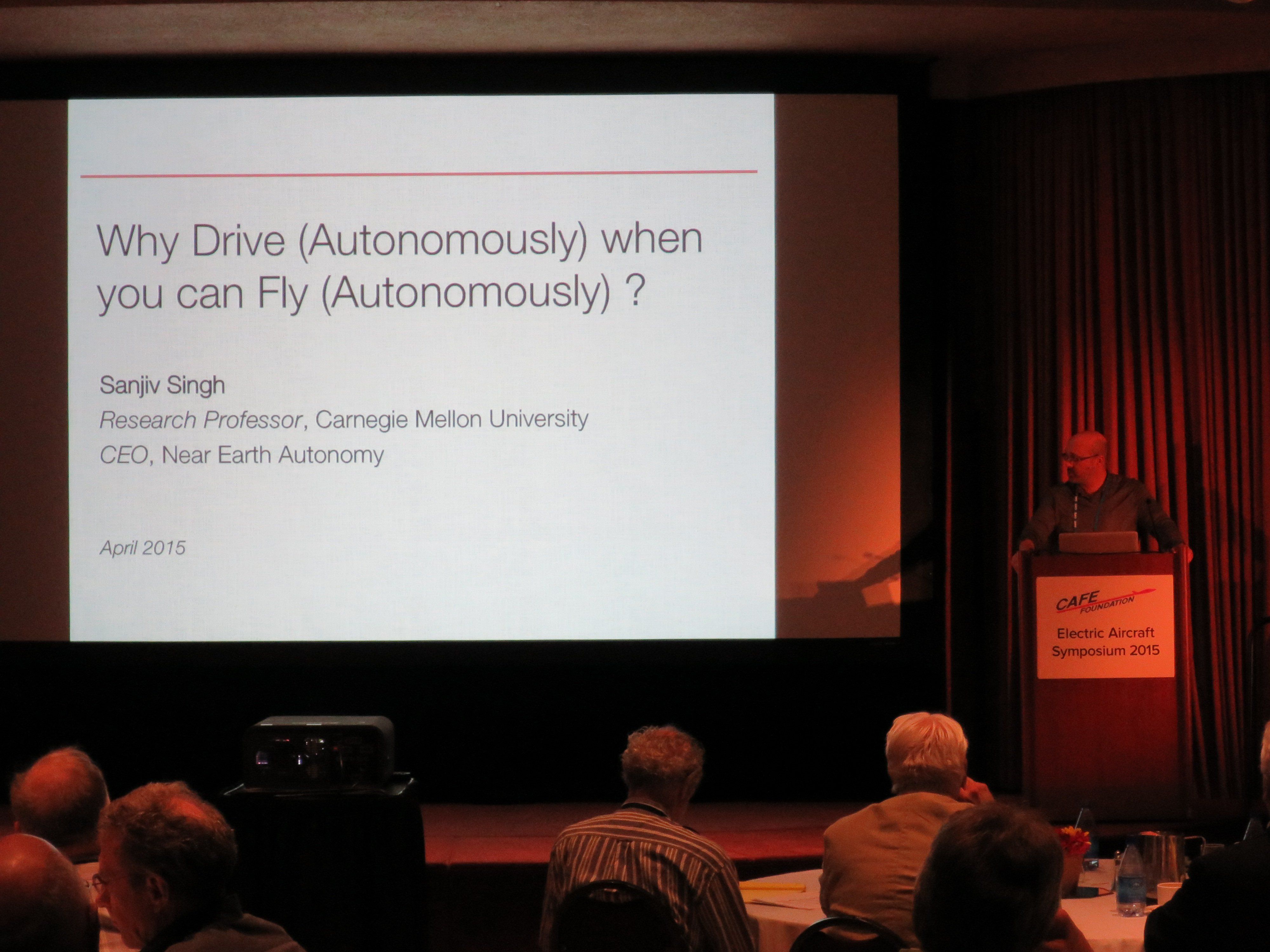
Is truly autonomous flight for aircraft—manned or not—lurking just around the corner? It depends on how you define around the corner, but some people in the autonomous flight field think it could be a reality within a decade and electric propulsion will both hurry it along and play a major role in its development.
Sanjiv Singh, CEO of Near Earth Autonomy, believes small aircraft autonomous flight will be fielded sooner than many people believe, although not for carrying passengers. “But to carry people, I think you’re going to have the same kind of reliability as general aviation,” he told AVweb in a podcast recorded at the ninth annual Electric Aircraft Symposium in Santa Rosa, California, this week.
Although small UAS technology has greatly informed the push to manned aircraft autonomy, some technical barriers remain. “The cost factor is still pretty high, although they’re coming down in cost. With self-driving cars, there’s a lot of technology that’s being developed, sensing elements and computing elements. This is a big industry in self-driving cars,” Singh told us.
When asked which mode is simpler to operate autonomously, Singh said aircraft are the easier challenge now and will likely remain so. “There are problems on the ground that just go away in the air. On the ground, you actually have to drive fairly close to things. On a divided highway, you’re driving at 60 miles an hour maybe less than a foot away from something coming in the other direction, so a split second can make the difference between safe travel and a catastrophic collision,” Singh says. “There are many more options for air vehicles to avoid dangerous situations. They can fly far from things; they don’t need to get close to things. In some ways, cars are easier but with aviation, the potential for damage is much higher. So the certification required is at a higher level.”
Being in the field, Singh is bullish on the timeline for autonomous air vehicles. “When you’re talking large aircraft that might take off and land at airports using, say, ILS. This is much sooner. I would give it somewhere in the next decade. Technically, it’s not as challenging as it is from a regulatory standpoint,” Singh says.

































